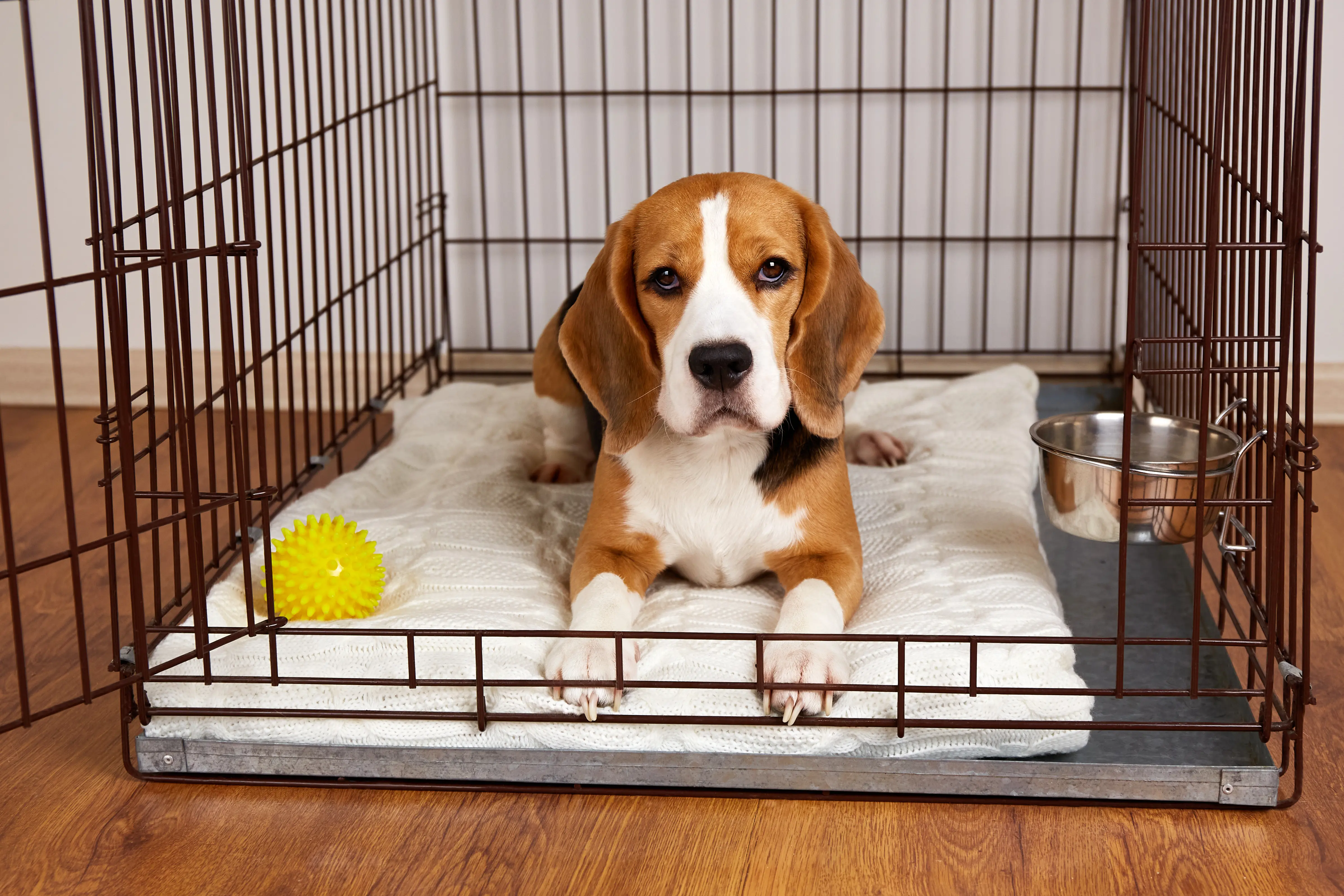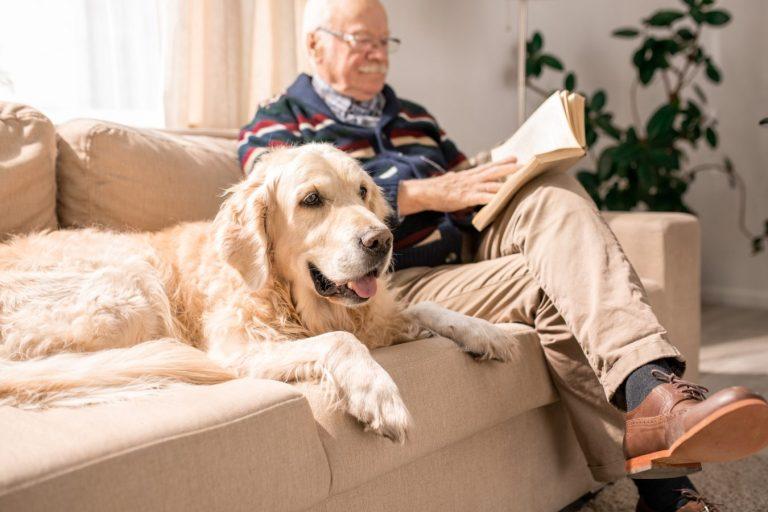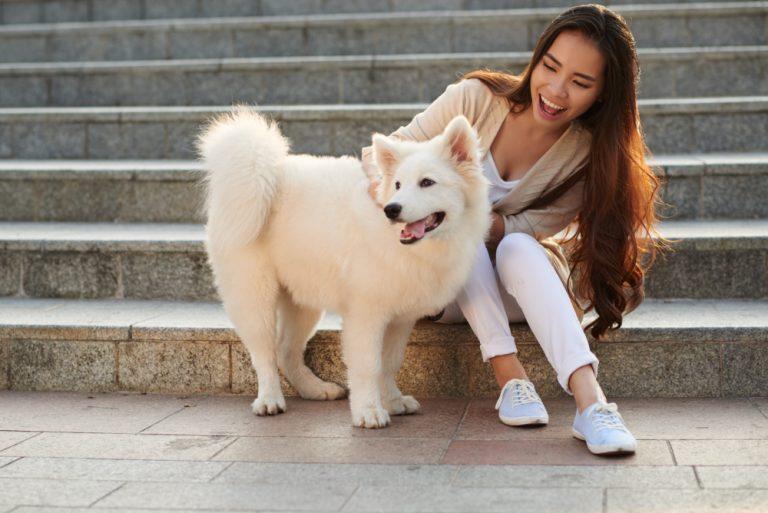Give Your Child And New Puppy A Great Start
Watching a small child and a loving new puppy play happily together is one of the most heartwarming events you will ever see. Even better, studies have proven that people fortunate enough to grow up with a dog in the family household tend to have happier childhoods.
Kids who grow up with a family dog learn respect for other creatures and how to care for them. These kids learn empathy, sympathy, and handling responsibilities. They also develop self-confidence and self-esteem by knowing they contribute to caring for a living creature.

You Must Help With A New Puppy
These benefits and learning experiences do not occur automatically between children and their pets. It takes a responsible and patient adult to properly introduce the child to the new puppy and teach them how to interact with and respect this new family member properly.
At the same time, the puppy must learn to respect and obey the child as he respects and follows the other family members. This way, every family member can have a loving and healthy relationship.
How you approach your puppy and the experiences you give him from his first minute in the house will create a lasting impact throughout his entire life. From the first introduction, your child should learn how to treat the puppy correctly. Your child should realize that the puppy is a baby and should be treated like one in many ways.

Bringing Home a New Puppy
Establishing a routine is one of the most crucial aspects of welcoming your puppy because there are many new experiences and things to consider. The structure will give your new puppy a sense of security and let him know what is expected of him.
Making a timetable and following it religiously is the best approach. You should train your new dog in acceptable habits throughout the first several weeks. A timetable, incidentally, benefits more than just the puppy; it also makes life simpler for the family’s human members. Not every moment of your dog’s day will need to be planned out, but there are a few key instances where doing so might mean the difference between a well-behaved dog and mayhem.
By immediately implementing the routine, you’ll be well on your way to a contented, well-adjusted dog. It’s worth investing the time and energy now so that bad habits and behaviors won’t have a chance to take hold. Routine makes it simpler for everyone, including people, to understand what is expected of them.
Avoiding Injuries To The New Puppy And Your Child
Children around seven years and younger tend to get excited when faced with new situations and experiences. This excitement may not be ideal for meeting a new puppy or a dog of any age.
Exciting behaviors such as making loud noises, chasing after the puppy, pulling at him, and other aggressive behaviors will scare the puppy.
In this situation, the puppy will likely run away instead of letting the child pet him. A very young puppy will try to find his mom and hide under her, while a puppy around 12 weeks old will perceive these behaviors as either a threat or aggressive play and will most likely react by nipping or jumping up.
Restraint and guidance are the proper way to introduce your new pet to your child. Your child should realize that the puppy is a baby and that your child should be gentle when handling him. To better teach your young ones how to be gentle, use a stuffed animal and teach them how to pet it properly. Practice this with your child for a few days before the new puppy arrives home.
Where Should a Puppy Sleep?
It is generally safe and acceptable for a puppy to sleep on your bed if certain precautions are taken. However, it is important to establish boundaries and consider if they align with your personal preferences and lifestyle. Here are a few factors to consider:
- Health and hygiene: Puppies can carry dirt, parasites, or allergens on their fur. Regular grooming, such as brushing and bathing, can help minimize these issues. Also, ensure your puppy is up-to-date on vaccinations and regularly treated for fleas and ticks.
- Training and behavior: If you allow your puppy on the bed, it is crucial to establish rules and boundaries. Proper training should ensure that your puppy understands when it is allowed on the bed and when not. This can help prevent behavior issues, such as dominance or possessiveness over the bed.
- Allergies and sensitivities: If you or anyone in your household is allergic to dogs or has sensitivities, allowing a puppy to sleep on the bed may exacerbate these issues. In such cases, it might be best to keep the puppy off the bed or designate specific bedding for the puppy’s use only.
- Quality of sleep: Puppies are often restless during the night, which can disrupt your sleep. Consider if you are comfortable with potential disturbances or if having the puppy sleep in a separate area, like a crate or their bed, would be better for you and the puppy’s sleep quality.
Ultimately, the decision to allow a puppy to sleep on your bed is a personal one. It is essential to consider your preferences, the puppy’s behavior and training, and any health or hygiene concerns.

Using a Crate
Whether or not to crate your puppy at night depends on various factors, such as your puppy’s age, behavior, and individual needs. Here are a few things to consider:
- Crate training benefits: Crates can serve as a safe space for dogs, mirroring the den-like environments they naturally prefer. It can help with house training, prevent destructive behaviors, and create a routine for resting.
- Puppy’s age: Young puppies have smaller bladders and may need to be let out during the night for bathroom breaks. Generally, puppies can control their bladder for one hour per month of age (e.g., a 4-month-old puppy may need a bathroom break every 4 hours). If you can’t wake up to let your puppy out during the night, confining them to a crate may help prevent accidents.
- Gradual introduction: If your puppy is not accustomed to the crate, it’s essential to introduce it gradually and create positive associations. Ensure the crate is comfortable and provide toys or treats as enrichment. Gradually increase the duration your puppy spends in the crate.
- Individual needs: Some puppies might not enjoy or benefit from crate training. Every dog is different, so it’s important to consider your puppy’s behavior, stress levels, and overall well-being when deciding whether to crate them at night.
Remember, it’s always a good idea to consult with a professional dog trainer or veterinarian for personalized advice based on your specific puppy’s needs.

New Puppy Supplies
Congratulations on getting a new puppy! Here are some essential puppy supplies you will need:
- Food and water bowls: Look for bowls that are sturdy and tip-proof.
- Puppy food: Choose a high-quality puppy food recommended by your veterinarian.
- Collar and leash: Get a properly sized collar and a lightweight leash for walks and training.
- ID tags: It’s important to have ID tags on your puppy’s collar with your contact information.
- Crate or dog bed: Provide your puppy with a comfortable and safe space to rest and sleep.
- Puppy pads or outdoor potty training supplies: For house training, you’ll need puppy pads or supplies for outdoor potty training.
- Dog toys: Invest in various chew toys, interactive toys, and puzzle toys to keep your puppy entertained.
- Grooming supplies: Buy a soft brush, nail clippers, and puppy-friendly shampoo for grooming sessions.
- Dental care products: A puppy toothbrush and toothpaste are important for maintaining good oral hygiene.
- Puppy training treats: Use small, soft treats for training sessions and rewards.
- Baby gates: These are useful for restricting access to certain areas of your home.
- Pet waste bags: Keep a stock of poop bags for picking up after your puppy during walks.
- Puppy training pads: These absorbent pads can be used for puppies still in the house-training phase.
- Puppy-safe cleaning supplies: Invest in pet-safe and stain-removing cleaning products to deal with accidents.
- Vet-approved flea and tick prevention products: Consult your vet for the appropriate flea and tick prevention treatment for your puppy.
Consult your veterinarian for specific recommendations based on your puppy’s breed, size, and your new puppy’s needs.
Frequently Asked Questions
Where should a puppy sleep?
If you do not want your puppy to sleep on your bed, the puppy should ideally sleep in a comfortable and safe area, such as a crate or a designated puppy bed.
Is it okay for a dog to sleep on my bed?
The decision to allow a puppy to sleep on your bed is a personal one. It is essential to consider your preferences, the puppy’s behavior and training, and any health or hygiene concerns.
What if my puppy cries at night?
Puppies may cry at night when separated from their littermates or accustomed to being with you all day. To alleviate this, gradually transition your puppy to sleeping in their own space by placing their bed or crate in your bedroom, then slowly moving it further away until they are comfortable sleeping alone.
When should a puppy get its first shots?
A puppy typically receives its first shots between 6 to 8 weeks of age. Please consult with a veterinarian to determine the appropriate vaccination schedule for your specific puppy and to ensure they are protected against common diseases.






